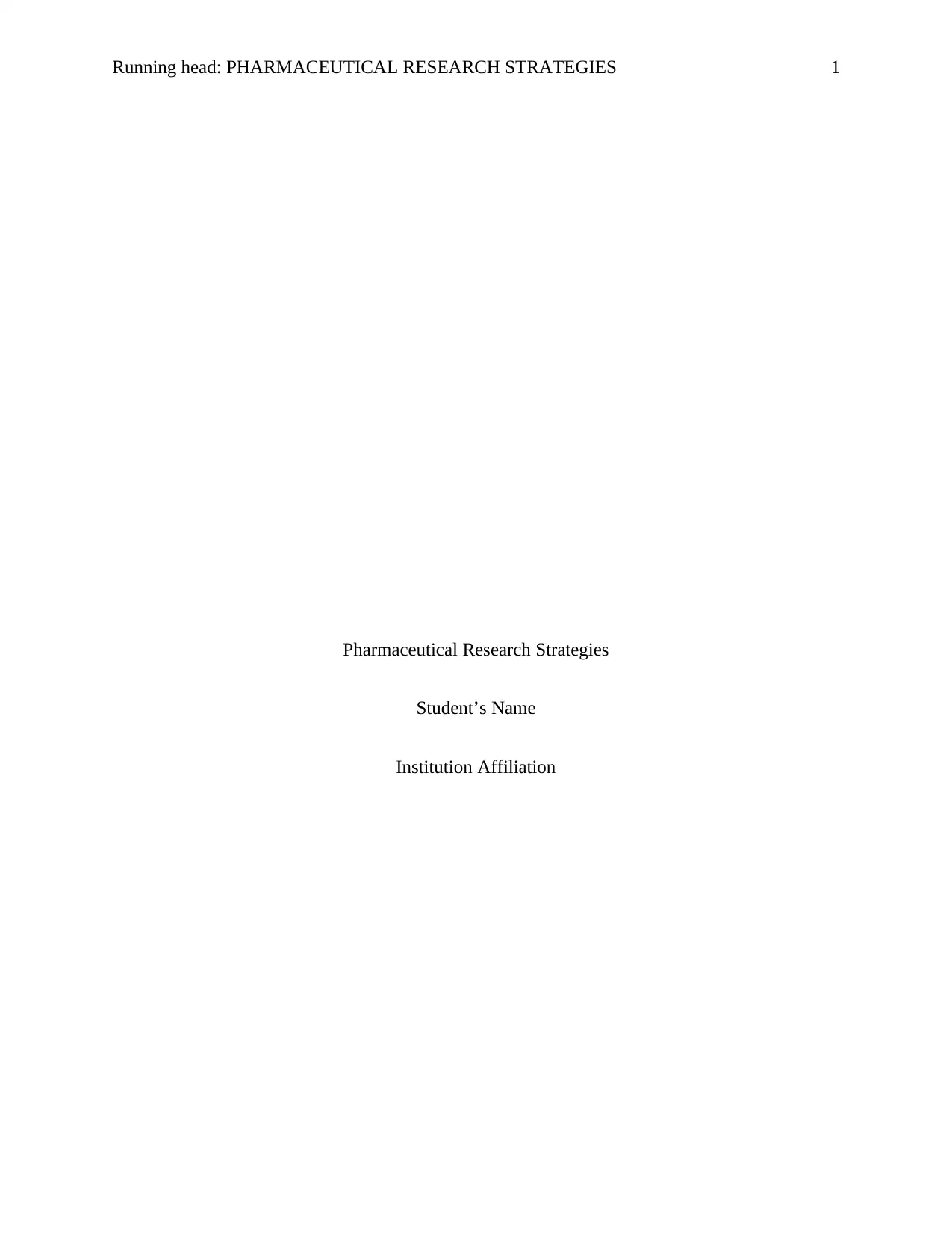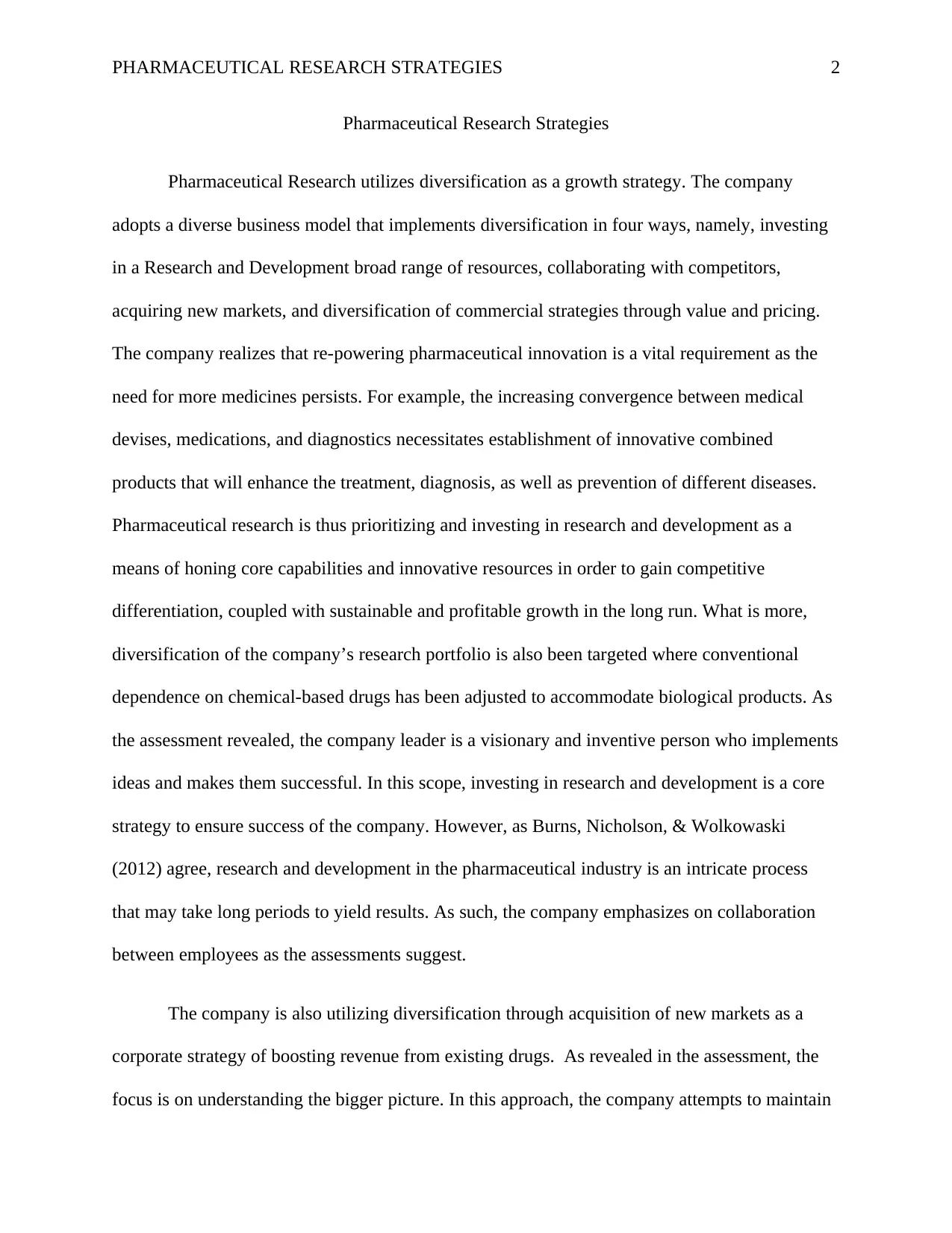Pharmaceutical Research Strategies: Diversification and Growth
VerifiedAdded on 2023/02/01
|4
|710
|66
Report
AI Summary
This report analyzes the pharmaceutical research strategies employed by a company to achieve growth and competitive advantage. The company utilizes diversification as a core strategy, implementing it through investments in research and development (R&D), collaborations, market acquisition, and commercial strategies. The report emphasizes the importance of R&D for innovation, the diversification of the research portfolio to include biological products, and the acquisition of new markets to boost revenue. Furthermore, the company focuses on product diversification through partnerships and efficient distribution channels to mitigate sales fluctuations. The report references the complex nature of pharmaceutical R&D and the importance of strategic approaches to navigate the competitive landscape, including value-based pricing and efficient distribution to secure market positioning. References from academic journals and business publications are included to support the analysis.
1 out of 4










![[object Object]](/_next/static/media/star-bottom.7253800d.svg)